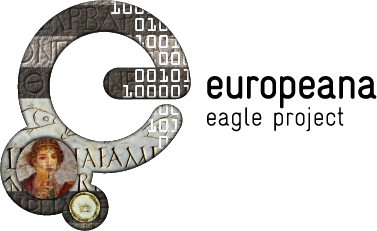The Perseus Digital Library (commonly referred to simply as Perseus) under the leadership of Professor of Classics Gregory Crane has been making primary and secondary scholarly texts as well as lexical tools available online since its inception in 1987. A leader in the emerging field of Digital Humanities, Perseus has become one of the largest and most frequently visited digital libraries in the world. In the more than twenty years since it moved to Tufts in 1992, Perseus has developed curated collections on the History and Topography of London, on Early Modern English, on the American Civil War, and especially on Greco-Roman culture, with a range of primary and secondary sources, including digitized editions, translations, commentaries, lexica, grammars, encyclopedias, and secondary sources, as well as a growing body of born-digital resources such as the Ancient Greek and Latin Treebanks, which store information about the usage of more than 400,000 words. The Perseus Digital Library’s resolute commitment to Open Access principles demonstrates its dedication to the free flow of ideas and cultural materials across languages, geographical, and social boundaries.
Since 2011, the Perseus team has been developing a collaborative online editing platform known as Perseids. The platform enables students, scholars, and members of the public to edit and publish historical documents such as inscriptions, manuscripts, and fragmentary texts. Perseids leverages as components some of the best tools currently available for collaborative editing in Classics, namely the Son of Suda Online (SoSOL) developed by the Integrating Digital Papyrology (IDP) project (http://idp.atlantides.org/) and the CITE services developed by the Center for Hellenic Studies for the Homer Multitext Project (http://www.homermultitext.org/). Both of these tools have been repeatedly tested and improved through actual online use and are constantly being optimized. Perseids also applies standard protocols, such as the Canonical Text Services (CTS, http://www.homermultitext.org/hmt-doc/cite/texts/cts.html) API and the Open Annotation Collaboration (OAC, http://www.openannotation.org/) Core Data Model, to facilitate the integration of component tools and services. Taken together, these pieces of software and standards provide an environment that supports textual editing as well as annotation and image mapping, a powerful combination that allows users to treat ancient documents not only as texts, but as whole physical objects by representing their layout and appearance. Furthermore, the fact that Perseids is part of the Perseus DL provides access to textual and morphological analysis tools and allows for the easy integration of the edited documents into the broader context of ancient literature.
In the context of T2.2 “Content curation and translation” and T 2.3 “Content harmonisation guidelines, including GIS and terminologies”, Perseus and Perseids cooperate in order to:
- harmonize translations and inscriptions
- develop tools to enter and check translations of epigraphic materials
- use common vocabularies and aligned definitions
- maximise useful interaction among projects in epigraphy
- activate a valuable network of specific projects to guarantee maximum quality
- exchanging best practices.
